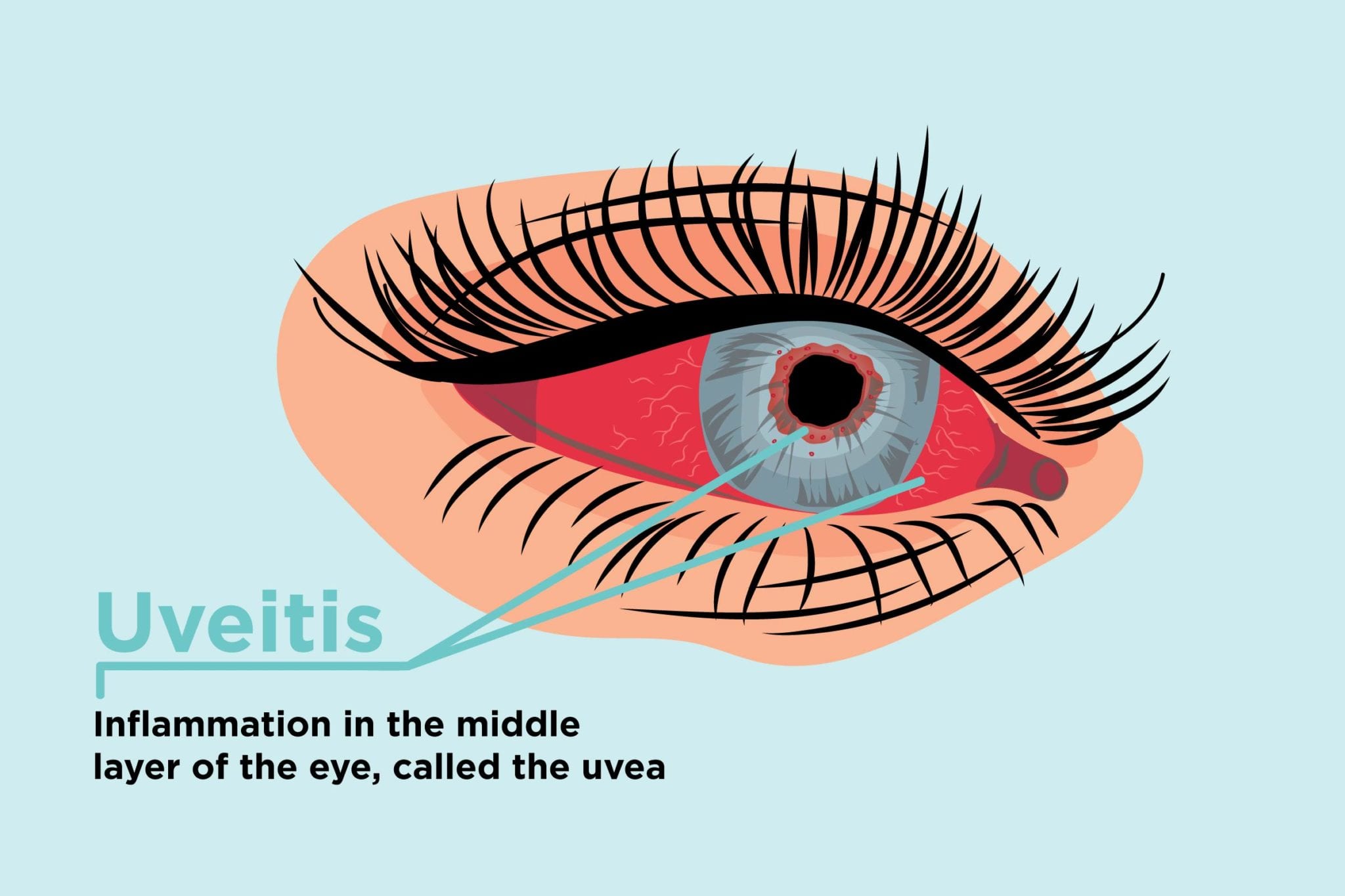Uveitis
Uveitis is a form of eye inflammation. It affects the middle layer of tissue in the eye wall (uvea).

Possible causes of uveitis are infection, injury, or an autoimmune or inflammatory disease. Many times a cause can't be identified.
Uveitis can be serious, leading to permanent vision loss. Early diagnosis and treatment are important to prevent the complications of uveitis.
Symptoms
- Eye redness
- Eye pain
- Light sensitivity
- Blurred vision
- Dark, floating spots in your field of vision (floaters)
- Decreased vision
Symptoms may occur suddenly and get worse quickly, though in some cases, they develop gradually. They may affect one or both eyes.
The type of uveitis you have depends on which part or parts of the eye are inflamed:
- Iritis (anterior uveitis) affects the front of your eye and is the most common type.
- Cyclitis (intermediate uveitis) affects the ciliary body.
- Choroiditis and retinitis (posterior uveitis) affect the back of your eye.
- Diffuse uveitis (panuveitis) occurs when all layers of the uvea are inflamed.
Causes
In about half of all cases, the specific cause of uveitis isn't clear. If a cause can be determined, it may be one of the following:
- Eye injury or surgery
- An autoimmune disorder, such as sarcoidosis or ankylosing spondylitis
- An inflammatory disorder, such as Crohn's disease or ulcerative colitis
- An infection, such as cat-scratch disease, herpes zoster, syphilis, toxoplasmosis, tuberculosis, Lyme disease or West Nile virus
- A cancer that affects the eye, such as lymphoma
Risk factors
People with changes in certain genes may be more likely to develop uveitis. In addition, a recent study shows a significant association between uveitis and cigarette smoking.
Complications
Left untreated, uveitis can cause complications, including:
- Glaucoma
- Cataracts
- Optic nerve damage
- Retinal detachment
- Permanent vision loss



留言
張貼留言